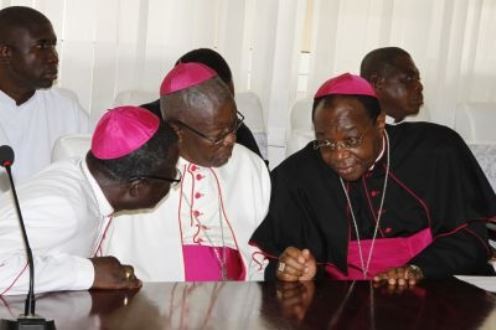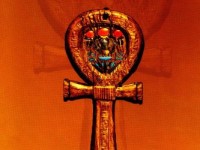 OK, OK don’t stone me just yet. “Study to show yourself approved”! Doesn’t the Bible even talk about the “Lying pens of the scribes” and that the “Whole world has been deceived” and that one day we will say “Our fathers’ have inherited lies”? Oh yes, you had better have at least a quick look at the article below. Go on, I dare you!
OK, OK don’t stone me just yet. “Study to show yourself approved”! Doesn’t the Bible even talk about the “Lying pens of the scribes” and that the “Whole world has been deceived” and that one day we will say “Our fathers’ have inherited lies”? Oh yes, you had better have at least a quick look at the article below. Go on, I dare you!
HOW CHRISTIANITY WAS INVENTED: THE TRUTH!
Posted on January 21, 2012 by beyondallreligion
HOW CHRISTIANITY WAS INVENTED: THE TRUTH!
Emperor Constantine
Christianity is a copycat religion created by Emperor Constantine (for political purposes). (Incidentally, Constantine murdered his wife and his son, and later, the Church made him a Saint.)
(For greater shocking revelations, see “Crimes of the Popes”, here) :http://www.ftarchives.net/foote/crimes/c7.htm
Saint Constantine’s copycat religion was based upon a myth (The Persian savior god Mithra, crucified 600 B.C. ? 400 B.C.?), which was based on other similar myths, all the way back to Chrishna of India (a mythical god that some claim was “crucified” around 1200 B.C.). There were 16 mythical crucifixions before Christ. The belief in the crucifixion of Gods was prevalent in various oriental or heathen countries long prior to the reported crucifixion of Christ. Of the 16 crucifixions, most were born of a virgin and about half of them on December 25th.
At Amazon.com, take a look at the book “Beyond All Religion-Beyond religious SCRIPTURES and practices that support intolerance violence and even war, A PEACEFUL WORLD AWAITS”.
Website:http://www.beyondallreligion.net/ Included: How is this for religious intolerance? Rabbi Yaacov Perrin said, “One million Arabs are not worth a Jewish fingernail.” Muhammad married a 6 year old girl. Joseph Smith, the founder of Mormonism had 24 wives, one was 14 years old. Smith was convicted of fraud (of being an “imposter”- a con man), in a court of law.. Then he wrote “The Book of Mormon..”. The story of Moses is patterned after the story of Sargon the Great. Moses did not exist. Christianity was invented for political purposes by the Roman Emperor Constantine (“The Great”) in 325 A.D. based on the myth of Mithra (Persian savior god born on December 25th). Look at “Compassion Center” on Facebook. A wonderful alternative to religion.
Emperor Constantine-continued: There were too many religions in Rome in 325 A.D. A Council was called in an endeavor to amalgamate the many religions of the Roman Empire into one. Christianity plagiarized older myths and legends historicized to suit the Roman Catholic Church while combining the numerous religions existing at the time (Krishna, Horus, Mithraism, Osirian, Isis, and many other mystery religions). For unity and to stop all the conflicts between the numerous religions…
Christianity was INVENTED. Eusebius (Bishop of Caesarea in Palestine “Father ofChurch History“) attended the Council of Nicaea in 325 A.D. and was a friend of Emperor Constantine, who also attended and made the keynote speech. Constantine instructed Eusebius to organize the compilation of a uniform collection of new writings developed from primary aspects of the religious texts submitted at the council. Eusebius has been described as follows: Jacob Burckhardt (19th century cultural historian) dismissed Eusebius as “the first thoroughly dishonest historian of antiquity”. He has been also described as “a political theologian”. He favored doctoring his history in his own words to “be useful first to ourselves and afterwards to posterity”. Edward Gibbon (18th century historian –“The Decline and Fall of the Roman Empire”) dismissed his testimony on the number of martyrs and impugned his honesty At first, there was controversy about the new religion at the Council of Nicaea. Some claimed it was a fiction and Christ was a fiction, but they did not prevail.
http://www.mountainman.com.au/essenes/Council%20of%20Nicaea.htm .
(To be clear on this matter, I say don’t trust Eusebius’s reports of the Apostles or how the Apostles died, and be suspicious of all of his writings.) – Author Samuel Butler
Eusebius then arranged for scribes to produce fifty sumptuous copies to be written on parchment in a legible manner, and in a convenient portable form, by professional scribes thoroughly accomplished in their art (ibid.).
Bishop Eusebius
These orders, said Eusebius, were followed by the immediate execution of the work itself we sent him [Constantine] magnificently and elaborately bound volumes of three-fold and four-fold forms (Life of Constantine, vol. iv, p.36). They were the New Testimonies, and this is the first mention (c. 331) of the New Testament in the historical record. With his instructions fulfilled, Constantine then decreed that the New Testimonies would thereafter be called the word of the Roman Saviour God (Life of Constantine, vol. iii, p. 29) and official to all presbyters sermonising in the Roman Empire.
He then ordered earlier presbyterial manuscripts and the records of the council burnt and declared that any man found concealing writings should be stricken off from his shoulders (beheaded).
NONE OF THESE 50 NEW TESTAMENTS EXIST TODAY OR ARE ADMITTED TO EXISTING!
THIS NEW TESTAMENT WAS THE OFFICIAL BOOK OF THE NEW UNIFIED RELIGION OF CONSTANTINE NOT THE BIBLE!
ALL OTHER BOOKS TO BE BURNED ,THAT WOULD INCLUDE THE TORAH/OLD TESTAMENT
IT INCLUDED BURNING THE GREAT LIBRARY OF ALEXANDRIA IN EGYPT 391 A.D.
In 391 A.D., Christian Emperor Theodosius I ordered the destruction of all pagan (“heathen” they were also called) temples. The Christian Patriarch Theophilus of Alexandria (Egypt) complied with this request. Seizing this opportunity, Theophilus exerted himself to the utmost to expose the pagan mysteries to contempt, the Serapeum also he showed full of extravagant superstitions, (and) the commander-in-chief of the troops in Egypt, assisted Theophilus in demolishing the heathen temples (and) then he destroyed the Serapeum. -Historia Ecclesiastica
The Serapeum housed the Great Library of Alexandria.http://en.wikipedia.org/wiki/Library_of_alexandria Why there are no records of Jesus Christ?
Federic William Farrar
It is not possible to find in any legitimate religious or historical writings compiled between the beginning of the first century and well into the fourth century any reference to Jesus Christ and the spectacular events that the Church says accompanied his life. This confirmation comes from Frederic Farrar (1831-1903) of Trinity College, Cambridge:
“It is amazing that history has not embalmed for us even one certain or definite saying or circumstance in the life of the Saviour of mankind … there is no statement in all history that says anyone saw Jesus or talked with him. Nothing in history is more astonishing than the silence of contemporary writers about events relayed in the four Gospels.” (The Life of Christ, Frederic W. Farrar, Cassell, London, 1874)
This situation arises from a conflict between history and New Testament narratives. Dr Tischendorf made this comment:
“We must frankly admit that we have no source of information with respect to the life of Jesus Christ other than ecclesiastic writings assembled during the fourth century.” (Codex Sinaiticus, Dr Constantin von Tischendorf, British Library, London)
There is an explanation for those hundreds of years of silence: the construct of Christianity did not begin until after the first quarter of the fourth century, and that is why Pope Leo X (d. 1521) called Christ a “fable” (Cardinal Bembo: His Letters…, op. cit.), and later Pope Paul III expressed similar sentiments, saying that there was no valid document to demonstrate the existence of Christ. He confessed that Jesus never existed, adding that he was no other than the sun, adored in its Mithraic sect…”
BUT WAIT, WHAT DOES THE CATHOLIC CHURCH SAY ABOUT THIS?
You will be surprised: From: http://www.bibliotecapleyades.net/biblianazar/esp_biblianazar_40.htm :
What (your local) Church doesn’t know and/or wouldn’t want you to know, if they knew.
It has often been emphasized that Christianity is unlike any other religion, for it stands or falls by certain events which are alleged to have occurred during a short period of time some 20 centuries ago. Those stories are presented in the New Testament, and as new evidence is revealed it will become clear that they do not represent historical realities.
The Church agrees, saying:
“Our documentary sources of knowledge about the origins of Christianity and its earliest development are chiefly the New Testament Scriptures, the authenticity of which we must, to a great extent, take for granted.” (Catholic Encyclopedia, Farley ed., vol. iii, p. 712)
The Church makes extraordinary admissions about its New Testament. For example, when discussing the origin of those writings, “the most distinguished body of academic opinion ever assembled” (Catholic Encyclopedias, Preface) admits that the Gospels “do not go back to the first century of the Christian era” (Catholic Encyclopedia, Farley ed., vol. vi, p. 137, pp. 655-6).
This statement conflicts with priesthood assertions that the earliest Gospels were progressively written during the decades following the death of the Gospel (sic) Jesus Christ. In a remarkable aside, the Church further admits that, “the earliest of the extant manuscripts [of the New Testament], it is true, do not date back beyond the middle of the fourth century AD”– (Catholic Encyclopedia, op. cit., pp. 656-7).
That is some 350 years after the time the Church claims that a Jesus Christ walked the sands of Palestine, and here the true story of Christian origins slips into one of the biggest black holes in history. There is, however, a reason why there were no New Testaments until the fourth century: they were not written until then, and here we find evidence of the greatest misrepresentation of all time. It was British-born Flavius Constantinus (Constantine, originally Custennyn or Custennin) (272-337) who authorized the compilation of the writings now called the New Testament.
Yes, but what about references to the four Gospels supposedly before the 3rd Century A.D.?
For example: What about Tacitus, Roman Historian, who wrote about the persecutions of the early “Christians”?
Regarding Tacitus, (Senator and Historian of the Roman Empire) these writings supporting the persecution were mysteriously found in the 15th century in the forests of Germany, following a reward offered by Leo X for old writings, and following a history of forgeries in Catholicism: In any case, there has been serious questions about the integrity of the famous passage about Christians.
From: http://www.earlychristianwritings.com/tacitus.html Gordon Stein denied the authenticity of this passage, arguing: (1) no corroborating evidence that Nero persecuted the Christians (2) there was not a multitude of Christians in Rome at that date (3) Christian was not a common term in the first century (4) Nero was indifferent to various religions in his city (5) Nero did not start the fire in Rome (6) Tacitus does not use the name Jesus (7)
Tacitus assumes his readers know Pontius Pilate Yes, but what about Josephus?
His reference to Jesus in Testimonium Flavianum has been claimed as a later addition, (Forgery-Author) not questioning the authenticity of the main work.
See: http://www.truthbeknown.com/josephus.htm
Also: https://www.academia.edu/10463098/Josephus_s_Testimonium_Flavianum_Examined_Linguistically_Greek_Analysis_Demonstrates_the_Passage_a_Forgery_In_Toto
In part:
Josephus’s Testimonium Flavianum Examined Linguistically Greek Analysis Demonstrates the Passage a Forgery In Toto
From D.M. Murdock
Author of
Who Was Jesus?
D.M.Murdock[at]StellarHousePublishing.com (With gratitude to Dr. Paul J. Hopper for his review of this paper)
Abstract
The passage about Jesus Christ in Jewish historian Josephus’s writings
has been debated for centuries, as concerns its authenticity totally, partially or not at all
. This brief “testimonium” is proffered by Christian apologists as the “best evidence” for the historicity of Jesus, but it has been declared many times to be a forgery in toto. A recent study by a renowned linguist confirms this analysis of the entire passage as an interpolation by a Christian scribe, likely during the fourth century or late
Yes, but what about Pliny the Younger’s letter to Emperor Trajan 112 A.D.(Pliny was not a contemporary of Jesus, and he never mentions “Jesus”?) Pliny the Younger (c. 61 – c. 112), the provincial governor of Pontus and Bithynia, wrote to Emperor Trajan c. 112 concerning how to deal with Christians, who refused to worship the emperor, and instead worshiped “Christus”.
What about that?
Charles Guignebert
Charles Guignebert, who does not doubt that Jesus of the Gospels lived in Gallilee in the 1st century, nevertheless dismisses this letter as acceptable historical evidence:
“Only the most robust credulity could reckon this assertion as admissible evidence for the historicity of Jesus” –http://en.wikipedia.org/wiki/Historicity_of_Jesus
Nevertheless, I was concerned about the possibility of far older Gospels when I was stating that Christianity was invented around 325 A.D., but the research thread leads back to Eusebius, the FORGER, (“Papias, quoted by Eusebius…”).
Eusebius was the dishonest Church Father historian of antiquity who made up a lot of Church history. “we shall introduce into this history in general only those events which may be useful first to ourselves and afterwards to posterity”. The research thread (about older Gospels) also leads to the “spurious” writings of Irenaeus: http://www.sodahead.com/united-states/gospels-late-forgeries/blog-249881/ .
THE RELIGIOUS QUICKSAND OF EARLY CHRISTIAN WRITINGS.
A SCHOLAR AND YOU WILL BE QUICKLY SWALLOWED UP IN QUICKSAND RESEARCHING SO-CALLED “PRE-NICENE” WRITINGS.
What about pre-nicene so-called “Early Christian” (Gnostic?) writings?They disagreed with each other, were riddled with conflict and forgeries, of questionable and confusing timing and origin , had conflicting opinions about supposed truths, and were not coherent enough for an organized religion. So the myth of Mithra, the Persian Savior God, was chosen by Emperor Constantine and Bishop Eusebius as the model to create the new religion , Christianity. What if there are references to Christ and/or Jesus in pre-nicene writings? That doesn’t mean Jesus or Christ existed. What if there are references to “fairies” in pre-nicene literature? That wouldn’t mean fairies existed, prior to the Council of Nicaea in 325 AD or later, even if the Council claimed the existence of fairies and made it doctrine, with severe penalties for those who denied their existence.
Yes, but what about Church father Justin Martyr’s purported use of the New Testament gospels? From Acharya S., Biblical scholar: (http://www.freethoughtnation.com/contributing-writers/63-acharya-s/679-does-justin-martyr-quote-the-gospels.html) “No verbatim quotes or unambiguous citations from the canonical gospels as we have them appear anywhere in Justin’s extant works.” Matthew, Mark and Luke are never named by Justin; nor is John. Nor does Justin Martyr name any of the evangelists in any known text
In any case, the Catholic Encyclopedia itself supports the thesis that the Gospels of Christianity were written no earlier than the 4th Century: “the earliest of the extant manuscripts [of the New Testament], it is true, do not date back beyond the middle of the fourth century AD”– (Catholic Encyclopedia, op. cit., pp. 656-7).
Retired Episcopal Bishop says Hell is an invention of the church to control people with fear:
Information about Eusebius, Constantine, and Paul. FATHER EUSEBIUS, FORGER:http://www.christianity-revealed.com/cr/files/fathereusebiustheforger.html (One view, for what it’s worth-a bit harsh)





